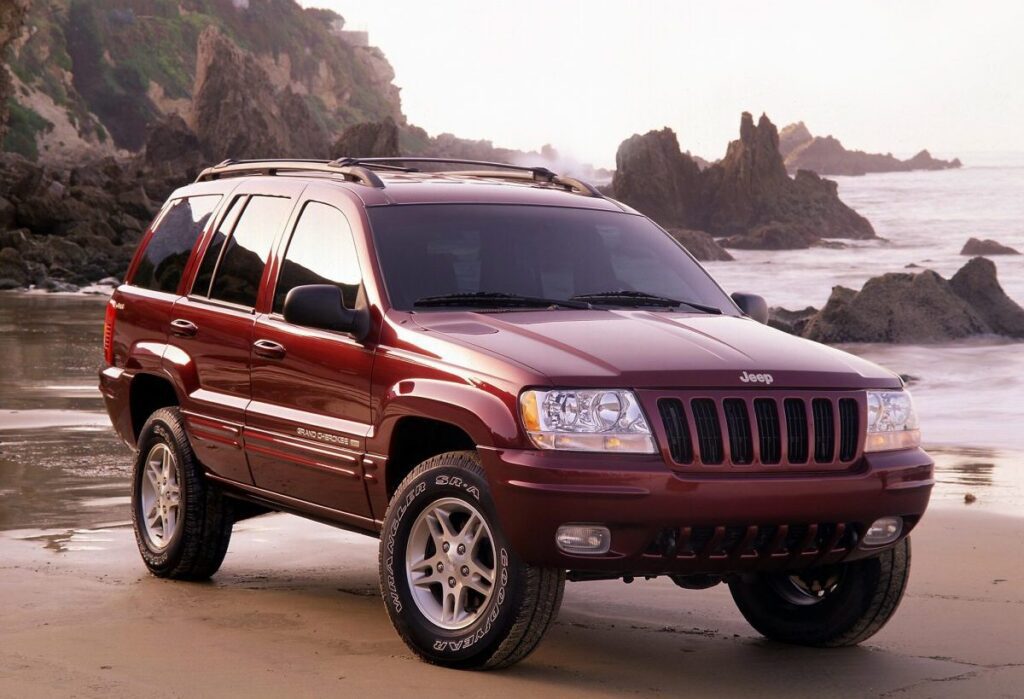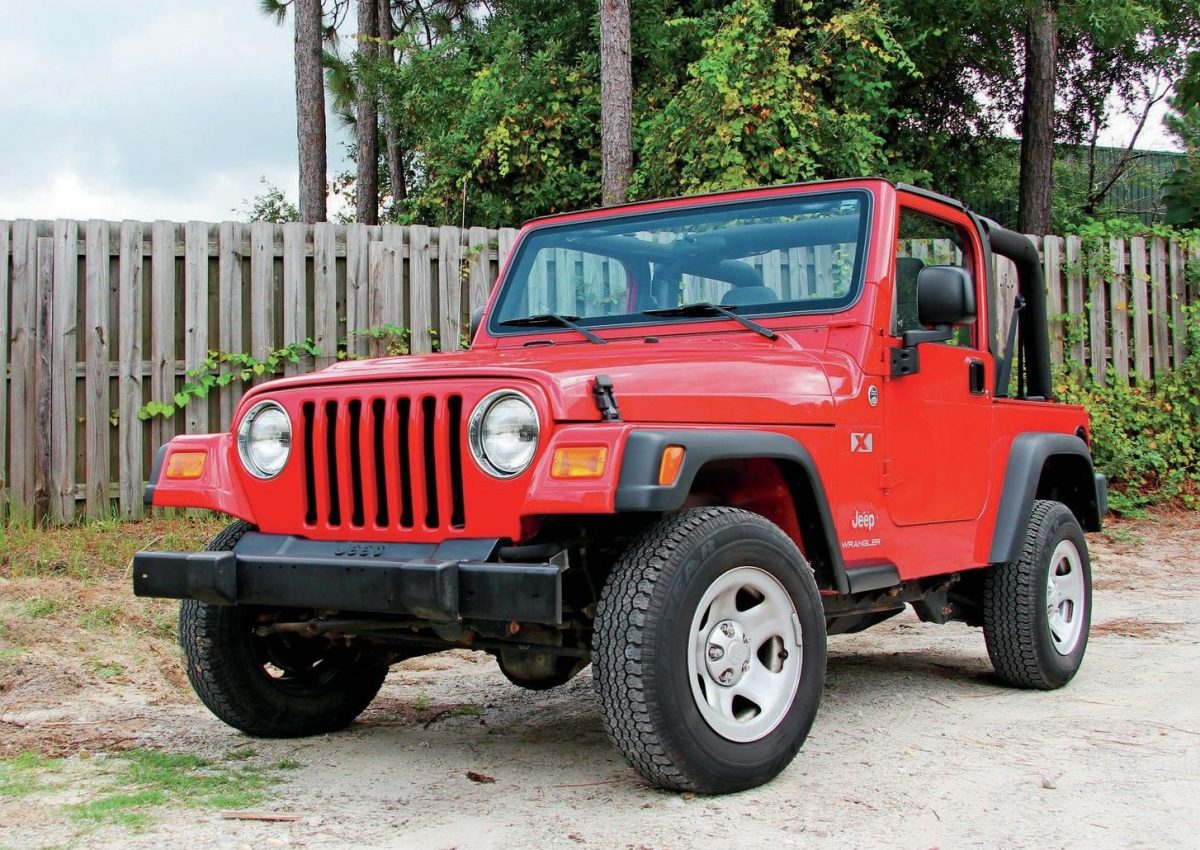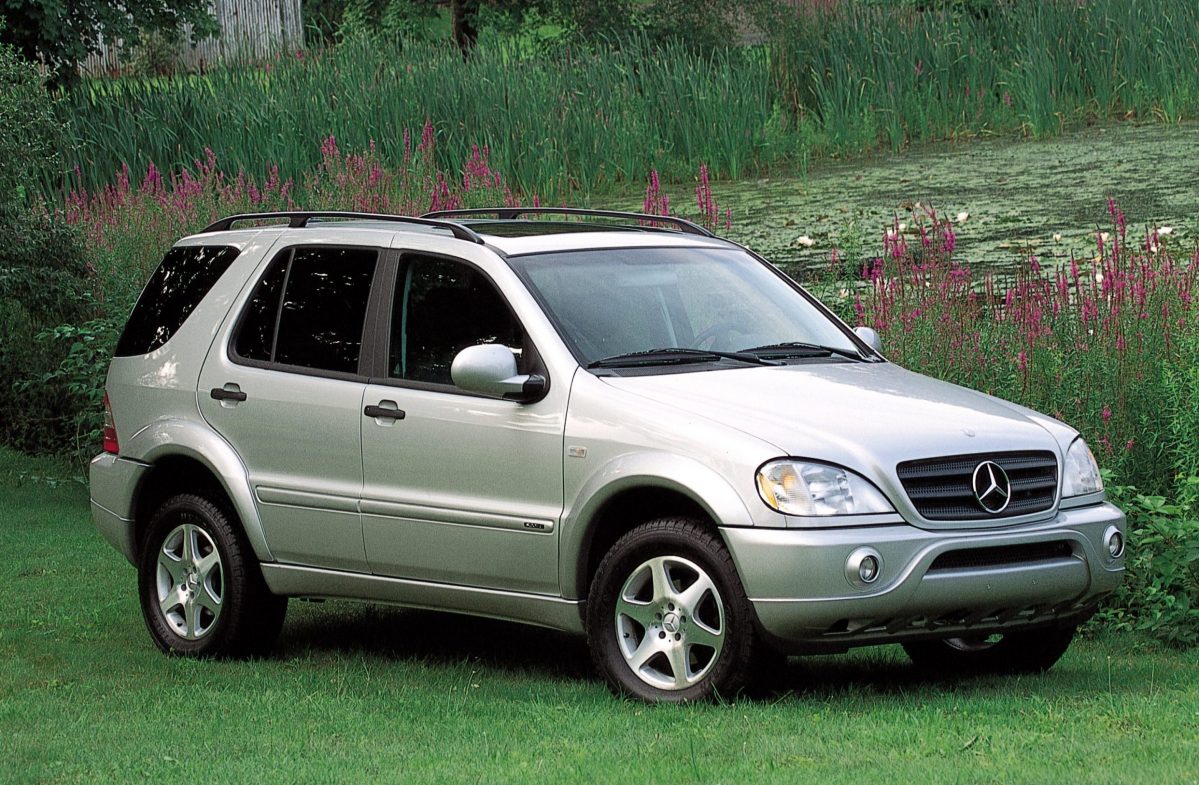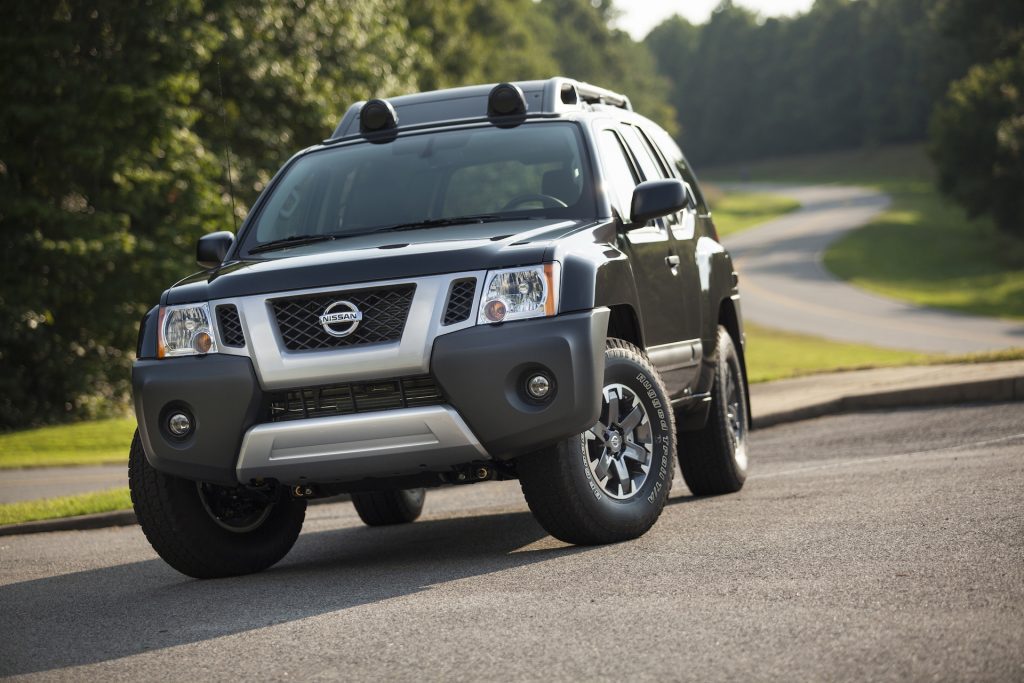What’s the Best Cheap Off-Road SUV? 5 Picks Under $10,000

Contents
Introduction
If you’ve been shopping for a used off-road SUV lately, you’ve probably noticed something. They’re expensive. Especially models that have a strong reputation for tackling the trails with aplomb.
A Toyota Land Cruiser is arguably the best of the breed. It combines legendary Toyota reliability with rugged body-on-frame construction and plenty of serious off-road hardware, including a low-range transfer case and locking differentials. But a nice example of even the cheapest Land Cruiser generation, the 100 series, will set you back at least $20,000 these days. Meanwhile, examples of the increasingly collectible 80-series Land Cruiser have been fetching twice that much and more on the auction site Bring a Trailer.
But you don’t have to spend the equivalent of a sizable down payment on a house to enjoy the backcountry in a capable off-road SUV. In fact, we’ve identified five lesser-known models that share many of the Land Cruiser’s best off-road features — but with a price tag of more than 50% off.
Selection Criteria
First, a few notes about how we made our list. To be included here, a model had to:
- be less than 20 years old (2001 or newer)
- have at least 8 inches of ground clearance (in stock form)
- feature a true four-wheel-drive (4WD) low range
And to prove the list isn’t just make-believe, we also crosschecked Autotrader to make sure that nice examples — i.e. with less than 150,000 miles and no accident history — were readily available for less than $10,000.
With that as our guide, here are the five best affordable off-road SUVs that we found (in alphabetical order).
The List

Jeep Grand Cherokee (WJ or WK)
- WJ models (1999-2004) are better for rugged off-roading
- WK models (2005-2010) offer improved ride comfort and more modern amenities
- WK models are more abundant on the used car market
Jeep introduced the Grand Cherokee way back in the early 1990s. Back then, it was the luxury version of the game-changing compact SUV, the XJ-generation Cherokee. The Grand Cherokee took the basic XJ formula — a four-wheel-drive box on wheels — and added desirable amenities such as power windows and door locks and even some luxury touches, such as available leather upholstery and heated seats. They also got more powerful engines, including an optional V8. The formula worked, and the Grand Cherokee has been one of Jeep’s most successful models, in continuous production to this day.
The Grand Cherokee models that meet our selection criteria hail from two different generations: the WJ (1999-2004) and the WK (2005-2010). Both feature unibody construction, which in theory isn’t as rugged as body-on-frame. But that hasn’t stopped the Grand Cherokee (or the XJ, for that matter) from earning a reputation as one of the most capable off-road SUVs that money can buy.
If you’re looking for the more rugged generation of the two, we’d steer you towards the WJ (pictured above), which offers 8.7 inches of ground clearance (stock) and solid axles front and rear. It’s also available with Jeep’s excellent Quadra-Drive 4WD system, which equips the SUV with not only a two-speed transfer case but also limited-slip differentials on both axles. That’s some serious off-road kit. The WJ is also the last Grand Cherokee to offer Jeep’s venerable 195-horsepower 4.0-liter inline-six engine under the hood, known for racking up 200,000+ miles with relative ease.
The WK is no slouch off the pavement, but it forgoes a live axle up front in favor of an independent suspension. That gives it a more car-like ride on the pavement at the cost of some rock-crawling abilities. Depending on how you plan to use it, that could be a plus. Also on the plus side, the WK is newer and offers more modern creature comforts and safety features, not to mention a more powerful base engine, a 210-hp 3.7-liter V6. Furthermore, nice WK examples are more abundant on the used car market. In our Autotrader search, we found 120 qualifying examples for sale nationwide versus only 60 for the older WJ.

Jeep Wrangler (TJ)
- Iconic off-roading pedigree
- Opt for the base SE or mid-level X trim to keep prices down
- Post-2001 models come with a stronger engine and more modern automatic
It’s hard to put any list of off-road SUVs together without including the Jeep Wrangler. With a history dating back to the Willys Jeeps of World War II, it’s the original off-road vehicle. And it has carried that mantle forward through the last eight decades (and numerous generations) with as much dexterity as, well, a Wrangler on Moab slickrock. On any given mountain trail, you’ll be more likely to find a Wrangler than any other vehicle.
The trouble is, it can be tough to find a Wrangler for under ten grand. Wranglers are famous for their high resale values, especially those with the most serious off-road hardware, such as the Rubicon and Sahara editions. Nice ones of those on the used market tend to command prices of $20,000 or more. Sometimes, a lot more.
But if you look closely, you can find excellent examples from the TJ generation (1997-2006) for under $10,000. Unfortunately, you won’t find any Rubicon or Sahara editions at this price point. But stick to the more pedestrian trim levels, such as the base SE or the midlevel X, and you’ll have some viable options. With at least 8.5 inches of ground clearance, fully boxed frames, solid axles, plus an available rear differential locker, they’ll do just fine on the vast majority of trails.
The Wrangler X trim features Jeep’s excellent 4.0-liter inline six under the hood, a worthy upgrade from the four-cylinder unit found in the SE. Focus on 2001 and newer specimens to get slightly more power from a revised version of the straight six as well as (starting in 2000) a more robust five-speed manual gearbox. Or, if you prefer an automatic, hold out for 2002 or newer versions for a much-improved four-speed transmission. Prior years made do with an antiquated three-speed unit.

Mercedes-Benz ML (W163)
- A luxury SUV with surprising off-road abilities
- Early quality resolved in 2002-2005 models
- Cheapest SUV on the list, but potentially expensive maintenance
You might be surprised to see a luxury Mercedes on our list. However, the first generation of the Mercedes-Benz M-Class (known internally as the W163) has a surprisingly robust off-road pedigree.
In classic Mercedes fashion, the W163 was massively overbuilt. Not only does it feature sturdy body-on-frame construction, 8.7 inches of ground clearance in stock form, and a Borg Warner two-speed transfer case, but an example driven by Jean-Pierre Strugo won the unmodified gasoline-powered production class (T1) at the 2003 Paris-Dakar rally, considered to be the most grueling off-road race on the planet.
Unfortunately, the W163 was also the first model to be assembled at Benz’s new (at the time) Alabama factory, and quality was not up to MB’s usual “the best or nothing” standard. That led to a poor reputation for the model, which lingers to this day.
The good news is that Mercedes poured a ton of money into fixing those early teething issues, so later W163s are vastly improved — especially the 2002-2005 model years, which also benefit from a significant model refresh. Additionally, MLs from those years got a “crawling” mode added to the four-wheel drive system, which helps the vehicle navigate steep slopes when in low range and traveling at low speeds.
To be sure, the W163 isn’t as capable off-road as something like a Wrangler, which is purpose-built for driving in the dirt. But its blend of Mercedes on-road civility with Dakar-winning underpinnings is a compelling combo — especially considering that the W163 is the cheapest SUV on our list. Even the very nicest examples are typically priced well under $10,000.
Note that subsequent generations of the M-Class — starting with the W164, which debuted for 2006 — dropped much of the hardware that made the W163 a capable off-road SUV, including its body-on-frame construction and two-speed transfer case. Stick with the first generation (1998-2005) if you plan to take your ML off-road.

Nissan Xterra (WD22 or R50)
- A more affordable alternative to the Toyota 4Runner
- Focus on 4WD versions with the optional V6
- Second-generation models (2005-2015) offer enhanced power
You may be wondering why the Toyota 4Runner isn’t among our picks. For many, a 4Runner from almost any generation makes an ideal off-road SUV. But 4Runners aren’t cheap. In fact, in a scan of Autotrader using the search criteria noted above, we found over 9000 4Runners for sale nationwide but only four under ten grand. That’s less than half a percent, and we don’t like those odds.
That’s where the Xterra comes in. Nissan first released the Xterra for the 2000 model year as a direct 4Runner competitor. Like its Toyota rival, the Xterra was based on a popular and highly capable truck — in this case, the Frontier. That means it features some of the most robust underpinnings of any vehicle on our list, including a ladder frame, a solid rear axle, and even leaf springs, for goodness sake. That’s about as agricultural as it gets — which is a good thing if you plan to steer those all-terrain tires off the beaten path.
Best of all, you don’t have to shop at the salvage yard to find sub-$10,000 Xterras for sale. There are plenty of good examples out there at that price point. Just be aware that Nissan offered the Xterra in a wide variety of configurations. You’ll want to avoid the available rear-wheel drive versions, which tend to be cheaper than 4WD specimens. And since the Xterra isn’t exactly a lightweight, you’ll probably also want to skip the base four-cylinder engine for the optional V6. A locking rear differential was also offered, which is nice to have if you can find one so equipped.
Nissan revamped the Xterra throughout its 16-year run (2000-2015), including a 2002 model refresh of the first generation (known internally as the WD22) and, for 2005, a complete redo. Fortunately, its second generation (the R50) kept most of the old-school truck hardware in place. Second-gen Xterras also got a significant power bump. The base four-cylinder was dropped in favor of a new 4.0-liter V6, making 265 horsepower.
Best for off-roading would be the aptly named Off-Road edition, which debuted with the R50 generation. That version boasts additional ground clearance (9.5 inches), skid plates, and a rear differential locker, among other upgrades. That’s about as good as any 4Runner out there — and for a lot less cash.

Volkswagen Touareg (7L) / Porsche Cayenne (9PA)
- Standard two-speed transfer case and locking center differential
- As much as 12 inches of ground clearance with optional air suspension
- Stick with 2010 or older models for the most off-road capability
The Touareg debuted for the 2004 model year as Volkswagen’s first SUV. And much like Mercedes with its original ML, VW’s first attempt was serious overkill. In a good way.
VW loaded the first-gen Touareg (internal code 7L) — as well as its mechanical sibling, the first-gen Porsche Cayenne (internal code 9PA) — with all sorts of off-road goodness, including 8.7 inches of ground clearance, a standard two-speed transfer case, and a locking center differential. Even better, the options list included not just a locking rear diff but also an adjustable air suspension capable of raising ground clearance to a whopping 11.8 inches. The latter even comes with an air compressor hose that you can use to refill your tires after airing them down for a session of rock crawling. Pretty neat.
VW wanted the Touareg to behave equally well on the tarmac, and it does so quite impressively, thanks to its car-like unit-body construction and four-wheel independent suspension, not to mention available V8 power. In their first drive at the time, Car and Driver called it “a muscular-feeling car, with tight roll angles and quick reaction times.” The Touareg’s thoroughly luxe interior doesn’t hurt either.
The Cayenne shares the Touareg’s excellent off-road abilities and doubles down on its on-road strengths with various high-performance options, including a mighty twin-turbo V8 churning out 450 horsepower. Realistically, you’ll be hard-pressed to find a Cayenne Turbo for under $10,000. Not to fear — the 340-hp naturally-aspirated V8 found in the Cayenne S should provide plenty of oomph for most people. On the other hand, the base 3.2-liter, 247-hp V6, which is shared with the Touareg (where it makes even less power), is a bit anemic for an SUV weighing 5,000 lbs.
Also, like Mercedes with the original ML, VW dropped much of the Touareg’s serious off-road gear with the introduction of the second generation (internal code 7P) in 2011. So keep your sights set on 2010 or older model years to ensure you can find one with 4WD low range and a locking center differential — and, if you’re lucky, the optional air suspension and locking rear diff.

The Bottom Line
When it comes to the best off-road SUVs, a few models can always be found near the top of the list: Land Cruiser, 4Runner, G-wagen, Rubicon. But good luck finding a clean specimen of any one of those for less than $20,000. These days, many are selling for twice that much and more.
Fortunately, the five models we’ve identified here provide nearly as much off-road ability for significantly less coin. That leaves you some extra cash to spend on other stuff you can use to enjoy the great outdoors. Like maybe some nice hiking boots, a camp stove, and a tent.
Heck, with the money you’ll save, you could not only explore the backwoods but, in some places, you could even buy a little chunk of it for yourself.
Now, that would be money well spent.
Photos courtesy of Jeep, Mercedes-Benz, Nissan, Volkswagen, and Wikimedia Commons